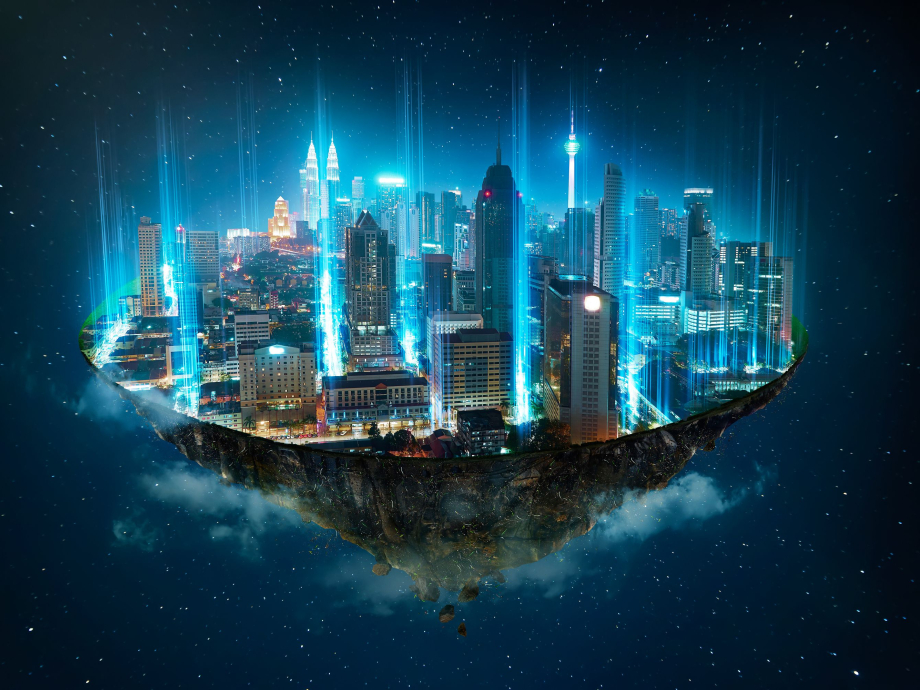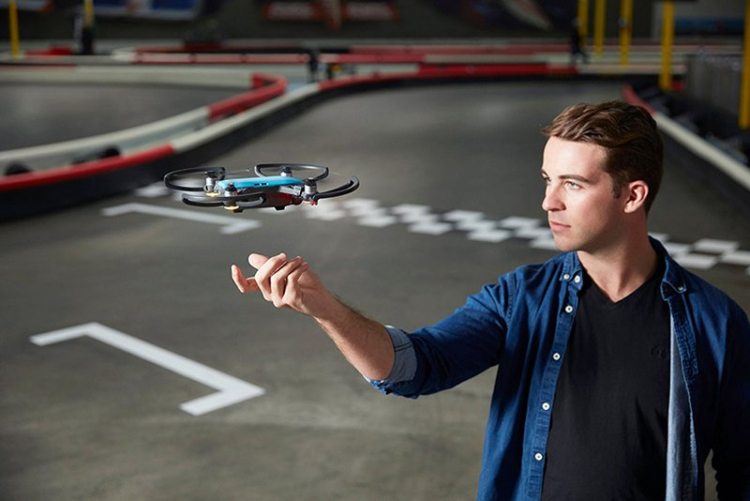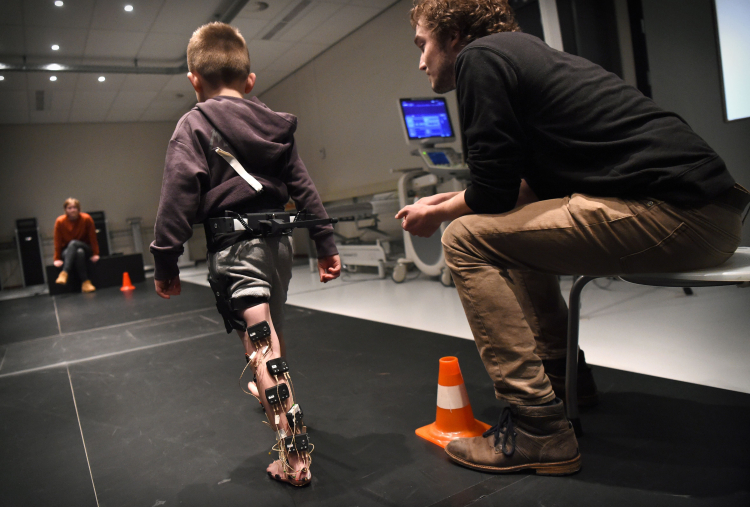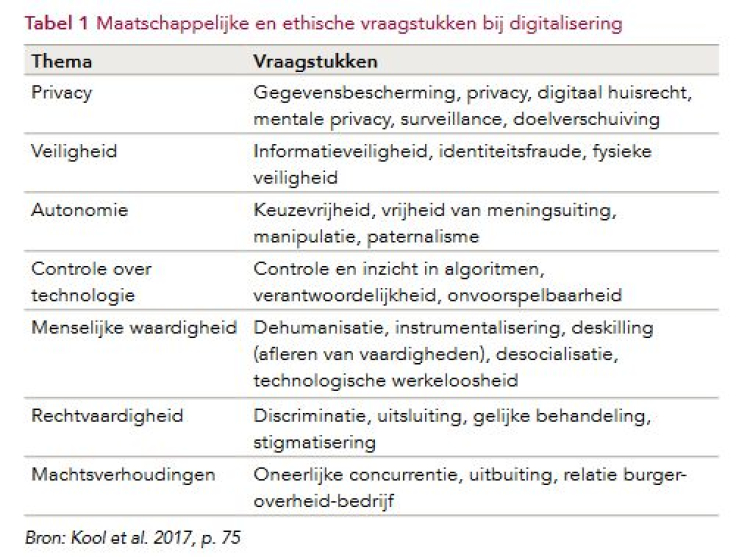From technological dreams to societal action
Some view new technologies as a benefit, others as a threat. Governments should take this into account. They have to simultaneously stimulate innovation and protect the vulnerable members of society. This article explores how governments can achieve this.

Many scientists, entrepreneurs and policymakers believe in the ‘technological dream’. It goes like this. Technology dictates how our society evolves. The technology is unstoppable and unmanageable, but that is not a problem because it improves on what people were able to do with the old technology. That is why progress in technology leads automatically to progress in society. Scientists and enterprises drive technological advances. Government bodies must encourage technical innovation and mitigate any adverse effects of technology on society. In short, technology should be and is beneficial.
There are countless reasons for the popularity of this dream.
- First of all, it is a narrative that is constantly being espoused by scientists, industry and politicians. After all, it earns them tons of funding, status and freedom. Many people go along with this narrative because they have little understanding of technology and innovation, but also because it is a story of hope: ‘new research will lead to the eradication of cancer within ten years’ or ‘new sustainable technology will solve the problem of climate change’.
- In addition, technology is both practical and ‘magical’ –just think of antibiotics, the LED, or the Google search engine.
- Finally, the indirect effects are often much more difficult to determine and only manifest themselves at a much later date.
This article shows that the reality of technology is more volatile. In the real world, technology represents both opportunities and risks and produces winners and losers. These two faces of technology call on governments to play a double role in innovation. In addition to encouraging innovation, they should also let public values inform the guidance that they provide. That is why this article also discusses how digitalisation expands our human capacities – to observe, think and act – in many ways, and how this has a bearing on all sorts of important public values.
This item is an adaptation of a chapter from Waardevol digitaliseren.
Reality for politicians and policy-makers
Technology and society
In the ‘real’ world, technology and society develop in tandem. People use technology to give shape to their lives and their environment. Social customs make some innovations possible while limiting others. As early as the eighteenth century, the founding father of capitalism, Adam Smith, suggested that the division of labour spurred innovation. He gave the example of the pin factory. Dividing up the process of pin-making into eighteen simple steps had greatly improved labour productivity. Eventually, that same division of labour made it possible to mechanise each of these simple operations. In this particular case, social innovation – the restructuring of the labour process – had stimulated technological innovation.
Technological and social innovation are not simply gifts from heaven. They require enormous effort and, most of all, learning from earlier mistakes. The history of the clap skate shows that it takes time to perfect a technology; in addition, because the clap skate required a different skating technique, skaters had to learn to move on the ice in a new way. In the sixteenth century, surgery was revolutionised when the butcher’s knife was replaced by the scalpel, but it took three generations of surgeons to figure out the best way to hold and make incisions with it (Sennett 2017, p. 425). New technology holds out the promise of improvement. The introduction of the clap skate led to a flood of new world records in speed skating. Innovation, however, requires the technology to be perfected, new knowledge and skills to be developed, and, in most cases, embedment in society and the law.
As we argued above, technology has a direct and visible impact. In theory, an automobile will get you from A to B faster than a bicycle. But if the roads are clogged with traffic, you may well get to B faster by cycling. This once again illustrates the interaction between technology and the social environment. Technology can also influence social customs, cultural patterns and even global trends. The automobile only gained mass popularity after Ford perfected the assembly line, laying the basis for mass production and the consumer society of the twentieth century. Political philosophy often plays an important role in advancing technology. For example, Dutch politician Joop Den Uyl – a progressive social democrat who sought to redistribute power, knowledge and wealth – said in 1967 that ‘Every person is entitled to a car’. That ‘aspiration’ has more or less come true.

Blind to consequences
As we have seen, the effects of technology are diverse, far-reaching and difficult to predict. This applies in the most literal sense to the earthquakes caused by gas production in the Dutch Province of Groningen. After more than fifty years of gas extraction, it is now patently obvious that our gas consumption is having an adverse impact on the living environment and emotional wellbeing of the people who live there. They had to fight long and hard to get the earthquakes on the political agenda and to force the government to address the damage caused by the tremors. We see here that technology’s glittering opportunities often come paired with risks. The way in which government manages the risks of technology and deals with those affected reveals its true face. What is at stake is trust between the people and government. In an opinion piece by Trouw, a resident of the town of Bierum, in Groningen, put it this way: ‘Beyond all the cracks in the walls and the urgent issue of safety, a gaping divide is opening up. Many of us here in Groningen no longer dare to rely on government. Deceit has caused the bottom to drop out of our civic lives’.
A naive optimism in technology has regularly caused advocates to be blind to its consequences. Society paid very little attention to the 1,500 traffic fatalities that occurred in the Netherlands in 1955. Andere Tijden wrote an article on this topic in a report on cars and society. Referring to the catastrophic floods of 1953, which claimed the lives of 1,836 people, Queen Wilhelmina said, ‘When a disaster takes place in some other domain, it rekindles our solidarity as a nation. How very different is the mindset on our streets and roads. It is as if human life has less value there’. For a long time, the public and politicians accepted the terrible consequences of driving as if they were a natural phenomenon. That led to a tragic nadir in 1972, when 3,264 people died on the roads. Today, thanks to a broad package of measures addressing automobile safety, infrastructure and driving behaviour – better cars, compulsory seatbelts, airbags, compulsory general periodic inspections, better asphalt, traffic lights, cycle paths, speed limits, drink-driving campaigns and alcohol testing – the number of traffic fatalities has fallen sharply. In 2015, there were 621 road fatalities.
The above measures were not welcomed with open arms, however. Pieter van Vollenhoven, who chaired the Dutch Transport Safety Board after it was established in 1977, had this to say in Andere Tijden: ‘Everyone was absolutely against everything. A compulsory seatbelt was regarded as a violation of human rights’ (Andere Tijden, 2018). The movement to improve traffic safety forced a battle to be waged in political circles and in society. People who had lost loved ones in traffic accidents played a key role in this regard. The automobile illustrates that social and political battles are not easy. However necessary and justified criticism may be, it is often perceived as irritating. History shows that this is a recipe for disaster. Progress is ultimately made through argument and rejoinder laying out both the advantages and disadvantages. The notion of progress is also tied to a specific time and place. In the 1970s, for example, it was imperative for the built environment to be car-friendly; in the 1990s, after a long political battle, the pedestrianised city centre regained its popularity. ‘Everyone is entitled to an automobile’ was anything but an innocent assertion. It sparked an enormous improvement in personal mobility, but it also led to many deaths, injuries and suffering among surviving family members, to air pollution and the degradation of the natural environment, and to traffic congestion and noise pollution.
Politicians and policy-makers are the true innovators
True innovation, it turns out, requires both technological and social innovation. We cannot extend the reach of technology without changing social, economic and political practices. It is a process of trial and error and has its winners and losers, and the losers do not automatically have an audience, even in the worst of circumstances. For their voices to be heard, the losers must first wage a societal and political battle. Government must always answer for both the beautiful and the ugly aspects of technology, and look after the winners and the losers.[1] In the marketplace, the losing companies go broke and the winners are rewarded with higher profits. To put it bluntly: the number of traffic deaths did not make a dent in the profits of the automobile industry. Society, however, was deeply affected by the adverse effects. Public authorities cannot abandon the losers to their fate.
Public authorities have played a pivotal role in shaping our mobility system. The first automobile – then called ‘a horseless carriage’ – arrived in the Netherlands in 1896. Today we have more than eight million of them on our roads, the result of more than a century of social and technological innovation in motorised mobility. The authorities encourage technical innovation in automobiles and in infrastructure (roads, bridges, etc.). They also oversee how technology is used. They use various forms of social innovation – in legislation, institutions, culture, driving behaviour and the way we talk and think about mobility – to guide the use of the automobile in the right direction. Because conflicting public interests often play a role here, their efforts call for political wisdom and prudent policy.
Government must always answer for both the beautiful and the ugly aspects of technology, and look after the winners and the losers.
Digitalisation as the extension of our nervous system
The contemporary automobile is a typical example of an invention dating from the First Machine Age.[2] The Industrial Revolution gave birth to machines that delivered mechanised muscle power and extended human physical capacity. The automobile extended our capacity to go from one place to another.
Since the early twentieth century, this potential has unleashed a complex set of changes that have had a profound impact on our way of life, on our living environment, and on consumption and production. The ‘innovation game’ related to the car is far from over. The icon of future mobility is now the self-driving car – ‘a driverless carriage’ – that people must trust to make the right decisions in traffic.
The self-driving or robot car is a good example of a machine dating from our own era, the Second Machine Age. It revolves around digital devices that deliver brainpower, such as computers, the internet, smartphones, artificial intelligence (AI), blockchain and robots. Just as mankind has changed our world utilising the machines of the First Machine Age, we will turn our world upside down with our smart devices.
In this article, we consider how local government can use and respond to the technological and societal challenges of the Second Machine Age. To understand the relevance of this question, we first look at the instrumental side of smart devices. We want to show how smart devices can enhance people’s physical and mental capacities.
Technology as an extension of the human body
William J. Mitchell, an architect who coined the term ‘smart city’, sees technology as an extension of the human body (Mitchell, 2004).[3] In his vision, we have arranged our homes and surroundings in such a way that they extend and enhance our physical and mental capacities in countless ways.
For example, Mitchell regards the water supply, the faucet, the toilet and the sewage system as extensions of our digestive tract. The bicycle and all cycle tracks are extensions of our legs and feet. While the machines of the First Machine Age mainly expand our physical capacities, the smart devices of the Second Machine Age enhance our cognitive capacities.
Our current living environment first arose during the Industrial Revolution. It can be seen as an array of machinery: a collection of large technological systems (drinking water and sewage systems, transport systems, electricity grids and communication networks) and devices, ranging from trains and automobiles to boilers. According to Mitchell, our bodies are thus connected to an extensive, external network of pipelines, pumps and land transport routes that supply us with food and water and remove and process waste.
We now live in the age of intelligent devices that function as appendages to the human nervous system, as it were. Our nervous system absorbs sensory stimuli, engages in cognitive processes and controls our muscles. Supported by the internet, smart devices are extending these three functions dramatically.
- First, we can use sensors to increase our sensory perception and thus our awareness of our surroundings. In Rotterdam, for example, operators at a single control centre track criminal behaviour through more than 450 security cameras.
- Second, we use algorithms and AI to improve our analytical skills. The Netherlands will be the first country in the world to use predictive policing nationwide.
- Finally, we can use IT of all sorts to control the mechanical systems of the First Machine Age. Examples include using a smartphone to control a smart thermostat when you’re not at home. And as of 2020, Amsterdam’s water management provider, Waternet, will be operating sixty different bridges and locks in Amsterdam from a single control centre.
The machine park of the Second Machine Age has come to be referred to as the ‘Internet of Things’ (IoT). They form a global network in which both people and devices are online and communicate with each other. The IoT is in fact a global robot network – for what is a robot but a machine that can sense, think and act? That is precisely what the IoT does.
And thanks to the IoT, we are becoming more and more connected all the time, through our smartphones. Shortly after you order a product from Amazon, a robot picks up a package at a distribution centre just across the border in Germany. We are, in effect, being fitted out with a kind of global robot suit that we can use to control a network of smart devices. Our living environment has become a gigantic robotic exoskeleton. This makes it possible for operators in Nevada to control military drones in Afghanistan and allows ‘us’ to believe in a golden future for the self-driving car robot.

How digitalisation challenges society
The digital technologies of the Second Machine Age therefore make much more possible than ever before. If we believe in the technological dream, then they should immediately make the world a better place. But we have learned the hard way that we have to work hard at creating a better world and that we need social innovation alongside technological innovation. That is because technology also influences social processes. Digitalisation affects the way we live, how we communicate, how our democracy operates, how we work, and how the economy performs. Online shopping is changing the streetscape in city centres (fewer travel agencies, banks and CD shops, more restaurants and pick-up points) and increasing the volume of goods transport.[4] Dating apps are automating flirting to some extent, and digital platforms are the new economic organisational model of the twenty-first century.
It’s obvious why the robot car won’t happen overnight –the technology needs to be improved. Opinions differ as to how long it will take to develop a reliable self-driving automobile. The technological battle has begun, in any event, and billions are being invested. The Dutch government has already amended the Road Transport Act so that experiments with autonomous automobiles can be carried out on public roads. Since robot cars must be able to communicate with one another and require continuous map updates – is that bridge up ahead open to traffic or not? – they depend on smart infrastructure. The next milestone will be the roll-out of the 5G network, capable of processing vast amounts of data in a very short time. Important points of contention are: who’s paying, and who’s responsible?
The following anecdote is telling in that regard. During a major auto show in Los Angeles, a top Volvo executive wanted to show the press and the city’s mayor what a smart car could do. When the car repeatedly failed to park properly, the executive snarled at the mayor, who was in the driver’s seat, ‘It can’t find the road markings! Why don’t you people paint markings on the damn roads!’ The debates about how and which decisions robot cars should take, about monitoring and about safety have already begun. So we see that even the robot car requires technological and social innovation, learning-by-doing, and the ability to steer a political and administrative middle course between various public values.
The time is past when IT developers only had to worry about privacy and the security of IT systems. Our study Urgent Upgrade examined the societal and ethical issues surrounding robotization, AI, digital platforms, big data and algorithms.
The study shows that digitalisation affects public values such as equity and equality, autonomy, control over technology, human dignity and the economic balance of power (see Table 1). Recent public debates show that we have moved beyond a purely academic discourse; they have concerned emissions-cheating software that made Volkswagen diesel cars out to be cleaner than they really are, the influence of fake news in the US presidential elections, the addictive power of social media or, for example, the rising anxiety among Dutch businesses about the economic power of colossal platforms such as Google, Apple, Amazon and Alibaba.

With so many public values at stake in digitalisation, the question is how local politicians and policy makers can play ‘the technology game’ in the public’s interest.
Want to read more on this topic?
Sources
[1] Teisman, G., H. van der Voort & A. Meijer (2016), "Overheden niet goed in innovatie? Empirische verkenningen van een innovatiedilemma", Bestuurskunde 25 (4): 51-60.
[2] Brynjolfsson, E. & A. McAfee (2014), The second machine age: Wok, progress, and prosperity in a time of brilliant technologies, New York: WW Norton.
[3] Mitchell, W.J. (2004) Me++: The cyborg self and the networked city, Cambridge, MA: MIT Press.
[4] Weltevreden, J. (2007), Winkelen in het internettijdperk. Rotterdam / Den Haag: NAi Uitgevers / Ruimtelijk Planbureau.